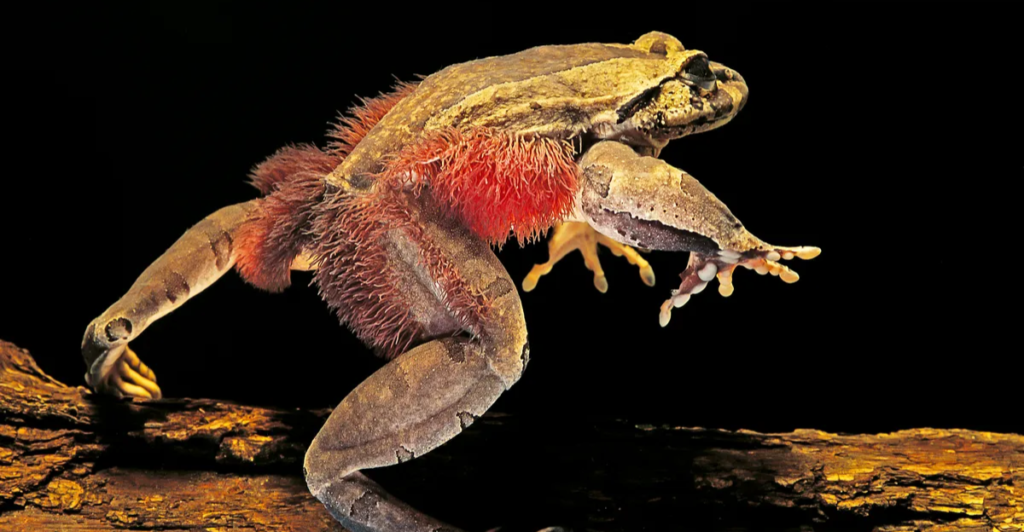
Survival in the wild isn’t just about strength or speed; it’s about clever tricks and unusual defenses. Some animals play dead, while others squirt blood or toxic slime at predators. These are twelve of nature’s most mind-blowing survival tactics.
1. Opossum
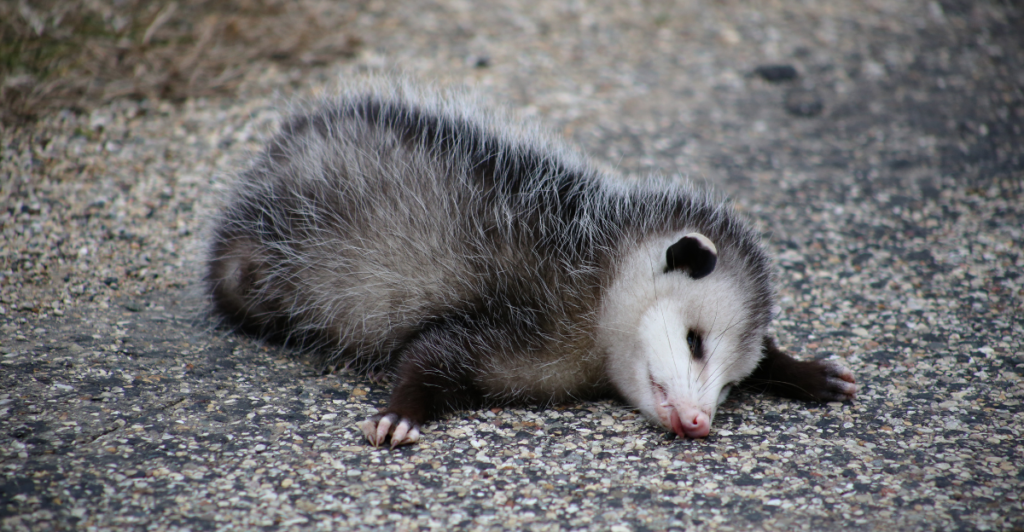
Opossums have a fascinating survival tactic. When they feel threatened, they will enter an involuntary state in which they mimic death. During this state, they secrete a foul-smelling odor from their anal glands, which replicates the scent of decay. They can stay in this state for hours.
2. Hairy Frog
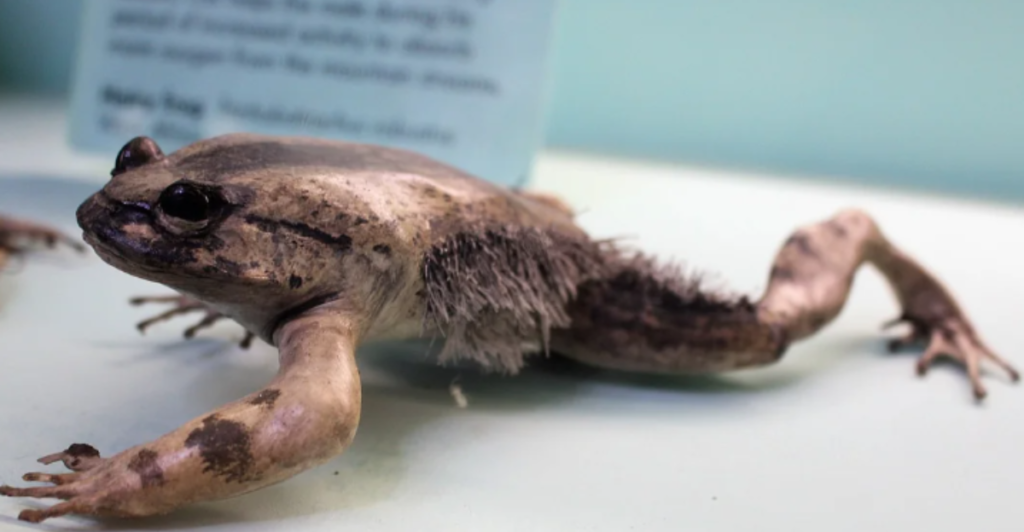
When the hairy frog feels threatened, it will intentionally break the bones in its toes and force them through the skin to create sharp claws. These “claws” serve as excellent weapons against predators! After deployment, the frog’s tissues regenerate over time to heal the self-inflicted wounds.
3. Hagfish
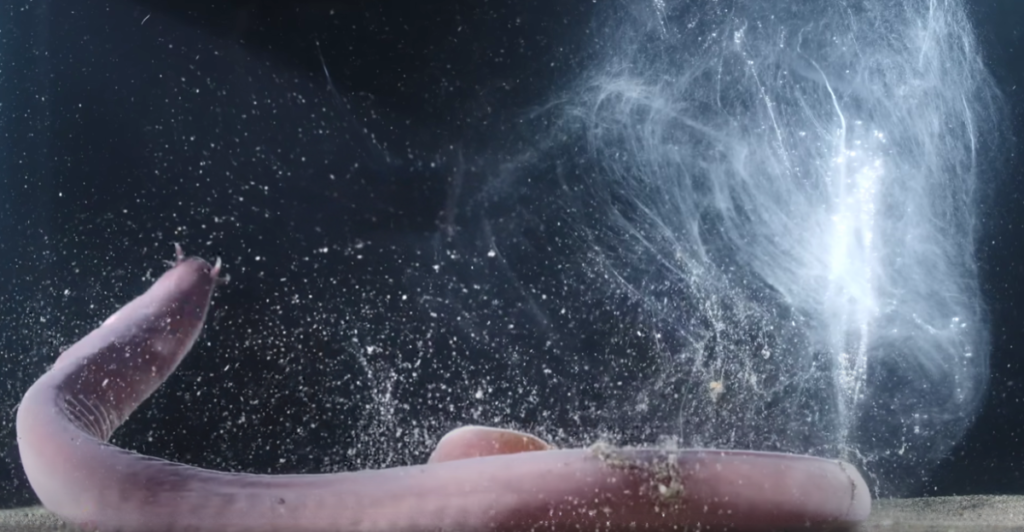
Hagfish secrete slime when threatened. This slime expands when it comes into contact with water, forming a gelatinous barrier that can clog the gills of predatory fish. Hagfish can produce a huge amount of this slime, with certain adults being able to produce a bucket-full in under a minute.
4. Horned Lizard – Blood-Squirting Eyes
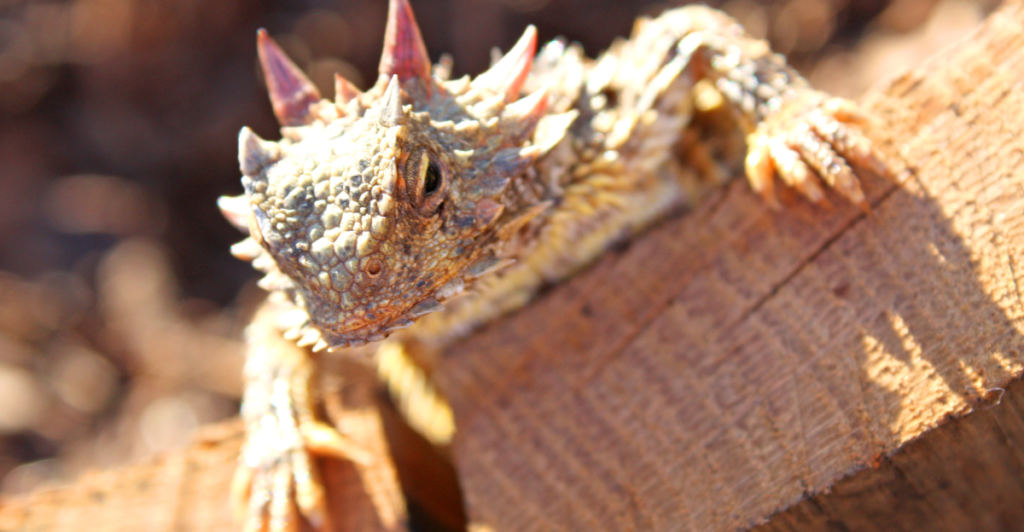
Horned lizards have developed a frightening defense mechanism. When they feel threatened, they can squirt blood from their eyes. By restricting blood flow from the head, they increase pressure until the blood vessels around the eyes burst, releasing a stream of blood that can deter predators.
5. Sea Cucumbers
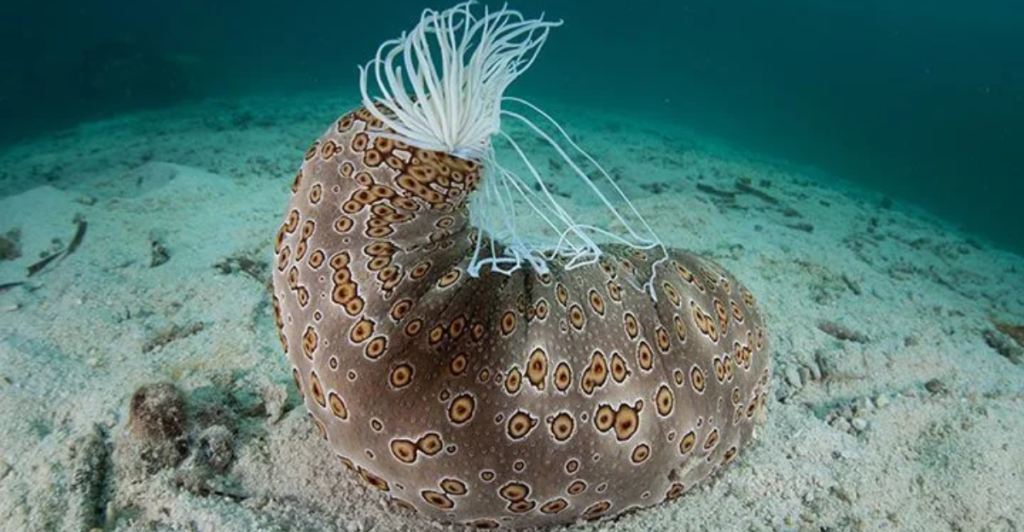
Sea cucumbers can eject their internal organs through their anus when they feel threatened. The expelled organs, which are often sticky and toxic, can entangle or deter predators, allowing the sea cucumber to make a safe escape. They can regenerate the lost organs over time.
6. Zombie Ant Fungus
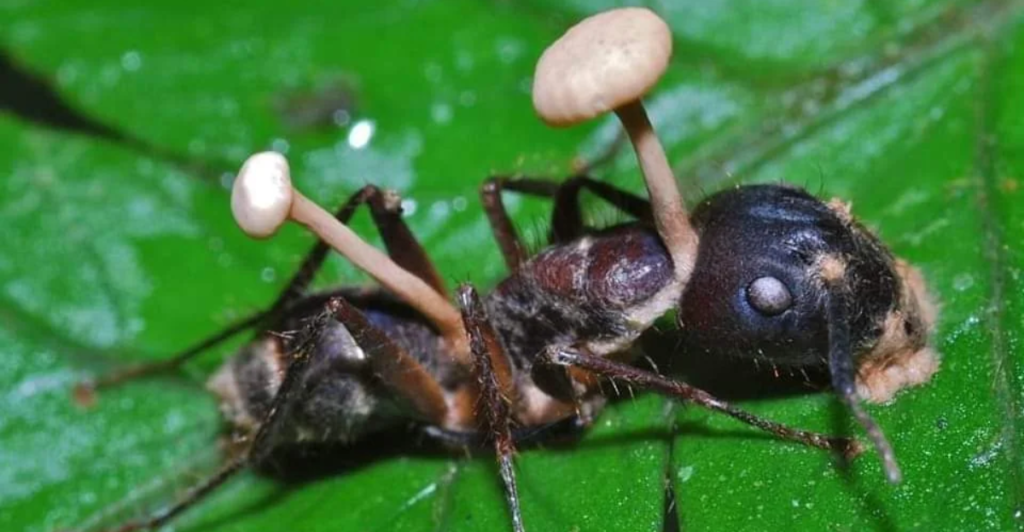
This parasitic fungus, which is also known as Ophiocordyceps unilateralis, infects ants and takes over their central nervous system. Infected ants are compelled to climb trees, attach themselves to high leaves, and die. The fungus then grows and releases spores from the ant’s body, continuing its life cycle by infecting other ants.
7. Komodo Dragons
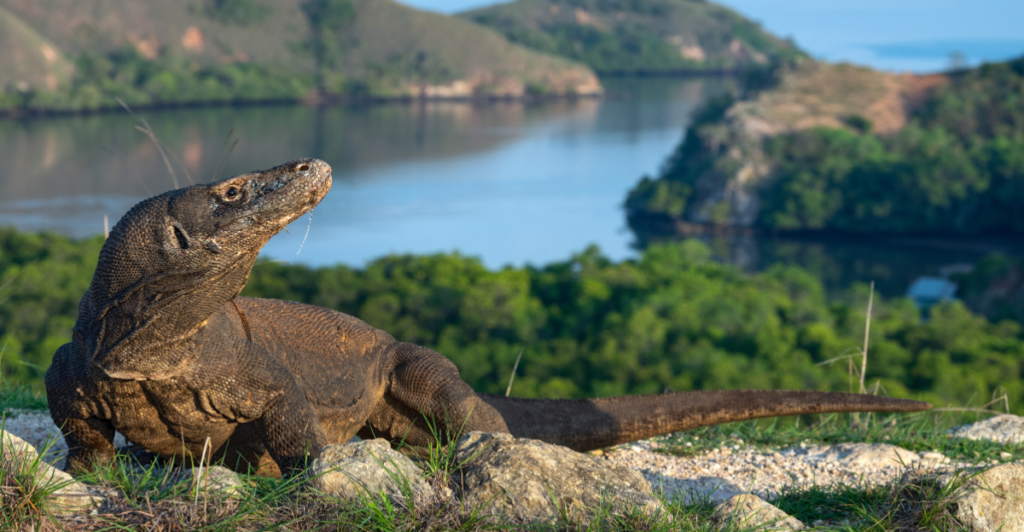
Komodo dragons, which are the largest living lizards, have highly venomous bites. Their venom contains toxins that prevent blood clotting and lower blood pressure, which often sends their prey into shock.
8. Toads
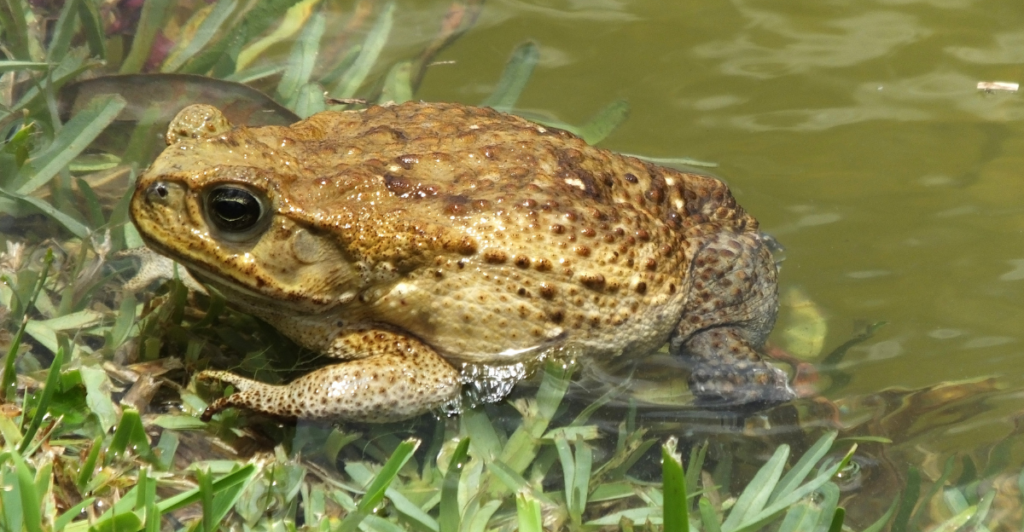
Many toad species have developed parotoid glands that secrete toxins. Some, like the cane toad, can inflate their bodies to appear larger and more threatening. This helps deter predators and increases the toad’s chances of survival.
9. Surinam Toad
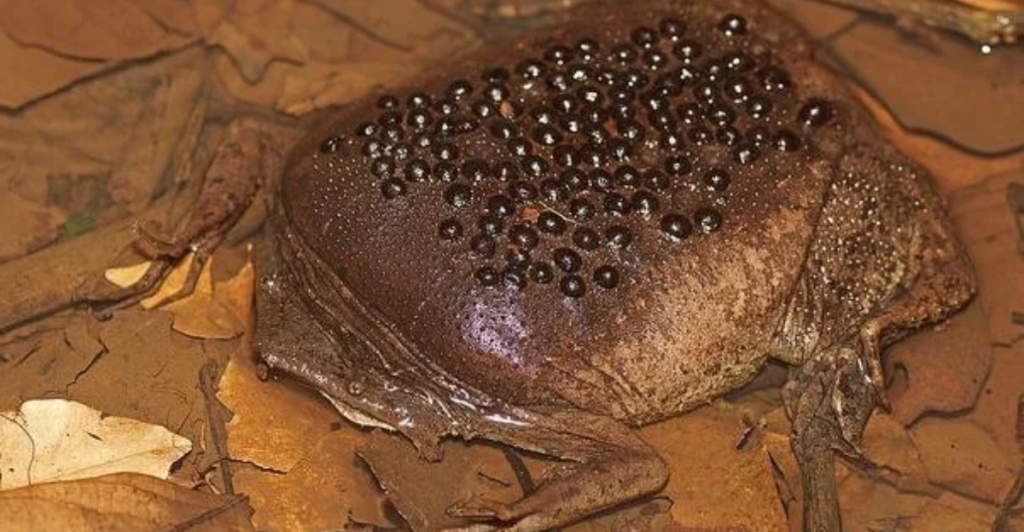
The Surinam toad has a unique reproductive strategy. After fertilization, the male embeds the eggs into the female’s back. The skin then grows over the eggs, protecting them until they hatch. The babies develop in these pockets and emerge fully formed.
10. Parasitic Wasps – Live Host Incubation
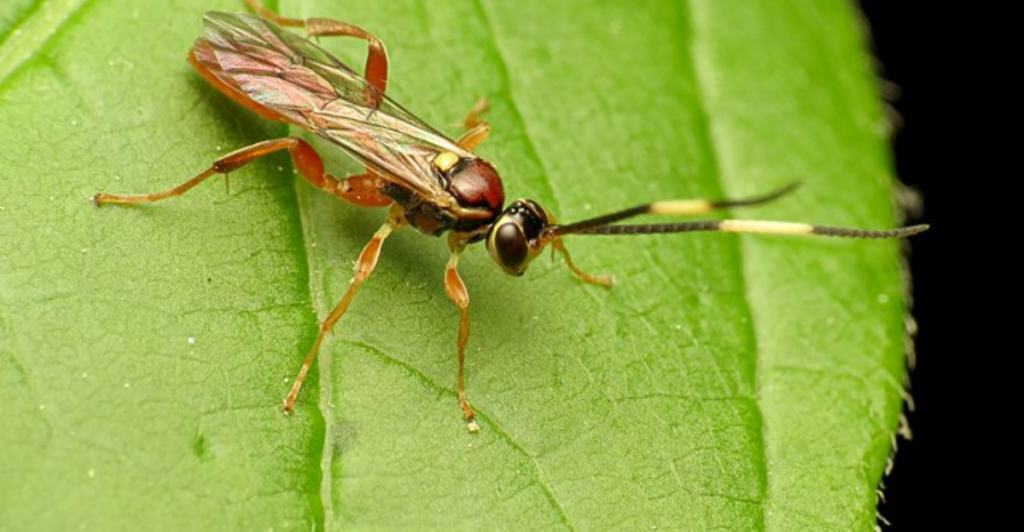
Certain parasitic wasps lay their eggs inside of live hosts, like caterpillars or spiders. The developing larvae will then start to consume the host from the inside, avoiding vital organs to keep it alive until they are ready to emerge.
11. Fulmar Chicks
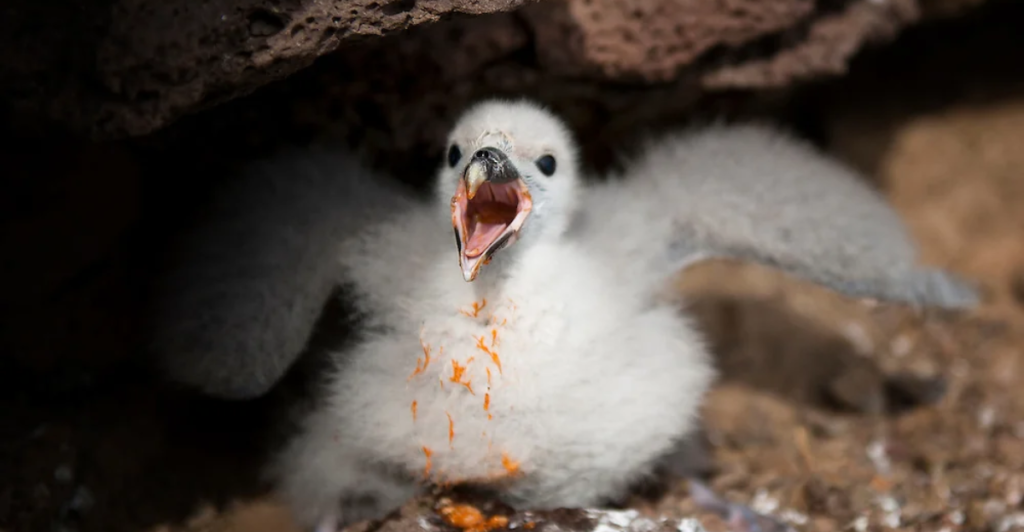
Fulmar chicks have a rather unusual defense strategy. When in danger, these chicks will spew foul-smelling, oily vomit at potential predators. This oil often mats the feathers of avian predators, impairing their ability to fly and giving the chick an opportunity to escape.
12. Bombardier Beetles
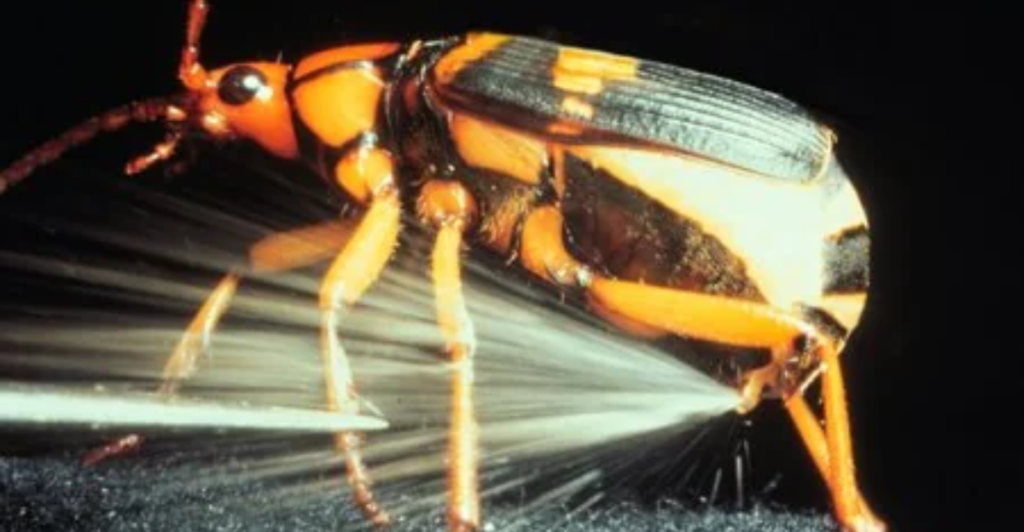
Bombardier beetles have a specialized defense mechanism that involves the expulsion of a hot, noxious chemical spray from their abdomen. They store two reactive chemicals separately, which, when combined in a specialized chamber, produce a violent exothermic reaction. They use it to injure potential predators.
Discover more of our trending stories and follow us to keep them appearing in your feed

Scientists Discover Giant Hidden Ocean Beneath the Surface
11 Animals That Mate for Life and What We Can Learn From Them
California Is Breaking Apart: A Fault Line Is Forming Faster Than Anyone Predicted
Philanthropist Promises To Cover $771.23M Annually After US Exit From Climate Accords
This article first appeared here
Stay connected with us for more stories like this! Follow us to get the latest updates or hit the Follow button at the top of this article, and let us know what you think by leaving your feedback below. We’d love to hear from you!







